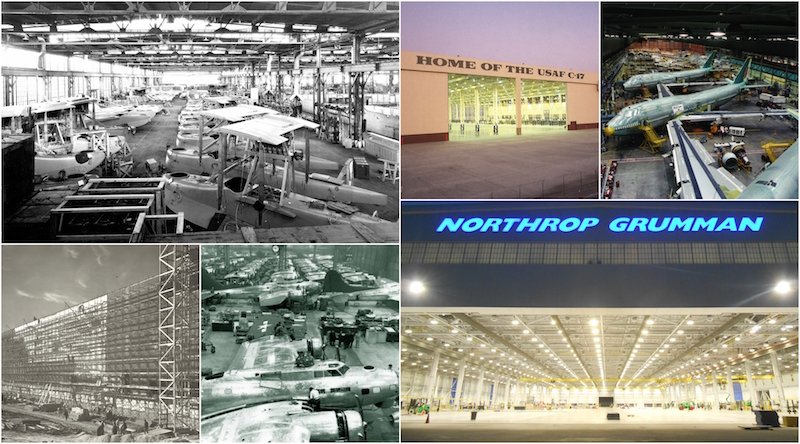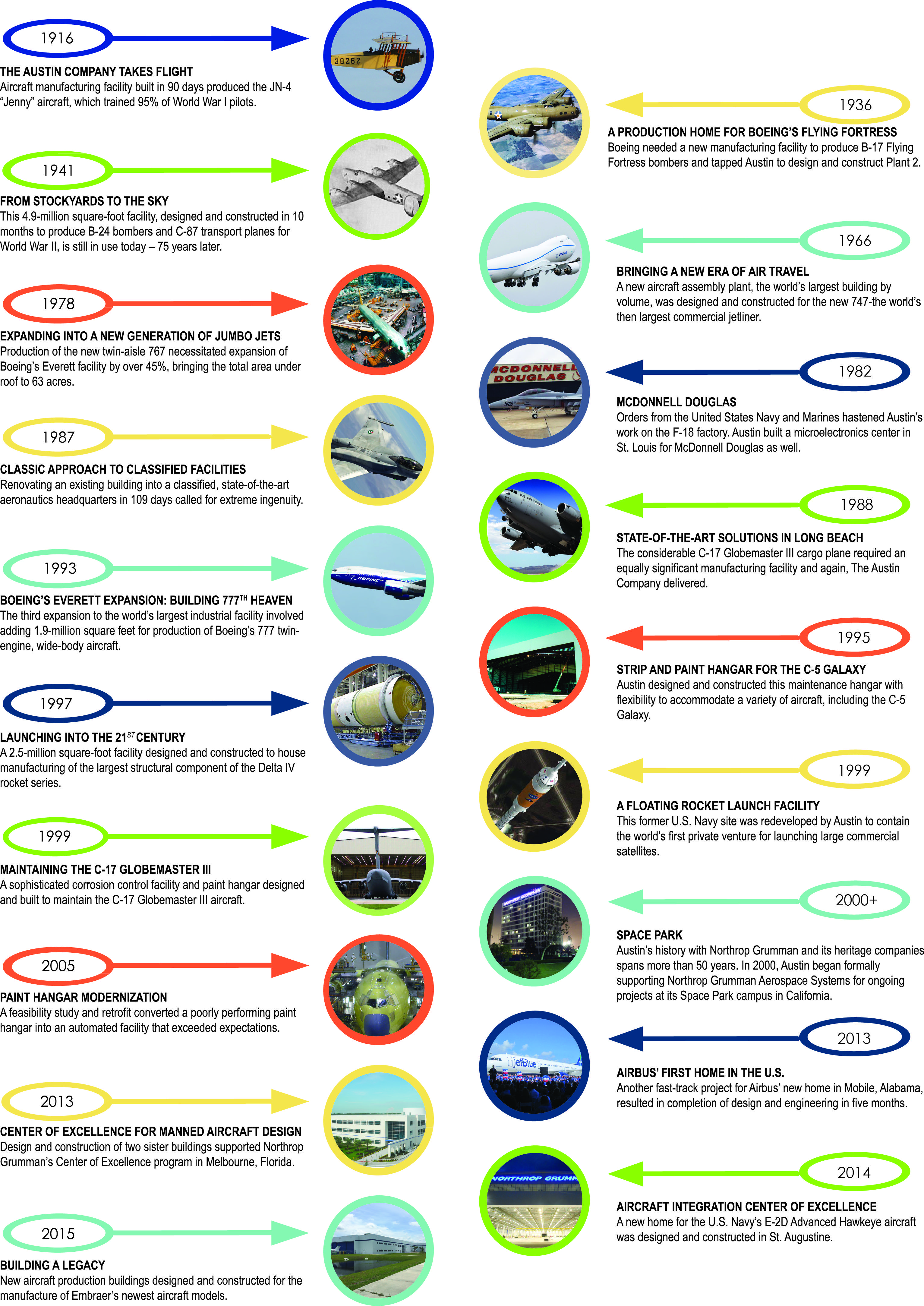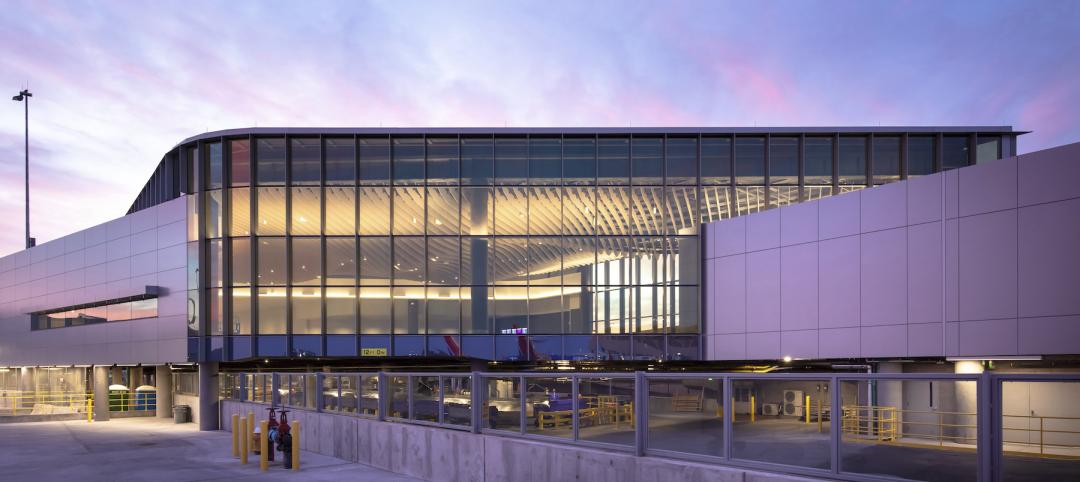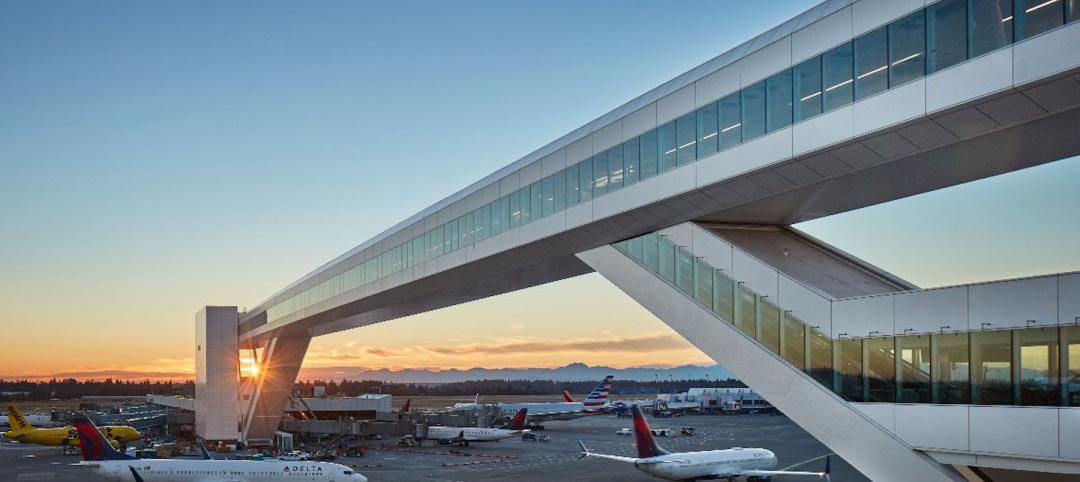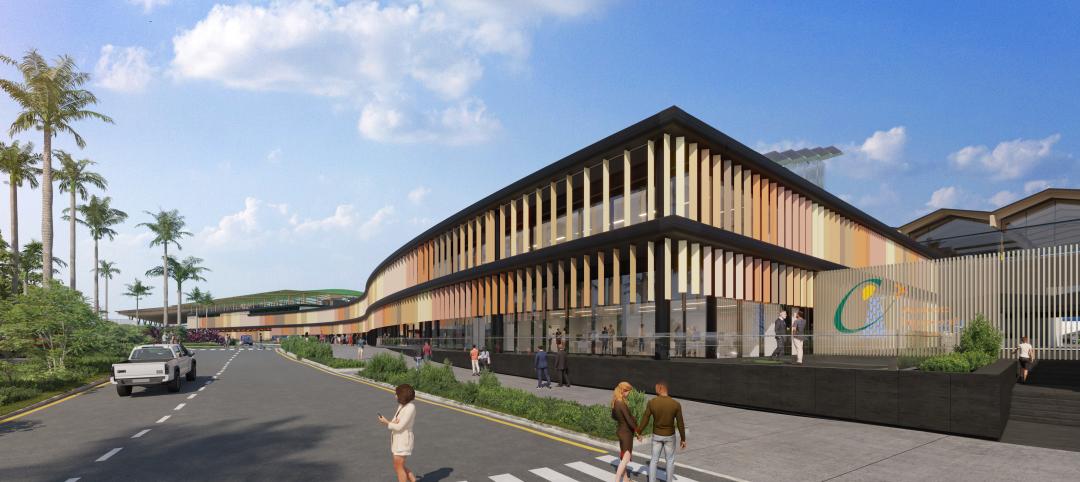One hundred years ago, in 1916, The Austin Company began design and construction on its first of many aircraft assembly plants – the Curtiss Aeroplane and Motor Company plant in Buffalo, N.Y. This was just the beginning of a long list of innovative and successfully designed and constructed complex aircraft facilities that were often completed on a fast-track basis.
Austin’s many innovations along the way contributed to the success of our clients by enabling them to operate in more efficient environments, optimize the flexibility of their operations, and meet aggressive schedules. Austin architects, engineers, and constructors devised many innovations for the aviation sector since its inception, such as bi-fold hangar doors, metal-saving fiberglass wall panels for WWII bomber plants, induced airflows to improve ventilation in large plants, rolling work platforms to speed schedules, and more.
It is a proud history. We like to say that Austin has aviation in our DNA. While Samuel Austin was our founder and established high standards of ethics, values, and quality in our work, his son Wilbert was the innovator and visionary for aviation. Tragically, Wilbert died in a plane crash in Chicago in 1940, but by then, the DNA was well established.
Austin has held a formative role in this dynamic industry: airplanes, airports, engines, hangars, flight kitchens, cargo facilities, rockets, satellites. We have created these facilities in the U.S., Canada, Mexico, Italy, Australia, Greece, UK, Japan, and other locations.
In 100 years, manned flight has evolved from single engine bi-planes to supersonic travel, satellites, and space tourism. Design and construction has gone from pencils, linen, and slide rules to lasers, GPS, and integrated software platforms. Some things remain constant, however; a passion for this industry, an excitement toward how this market inspires and challenges us to innovate and achieve higher goals, and an appreciation of how this market drives us to technical excellence. This is where the DNA shows up, and it carries over into every market and industry we serve.
This historical timeline highlights some of the many aviation and aerospace projects Austin has completed over the past 100 years. It is a proud legacy that we carry on in our daily work.
Learn more at: http://www.theaustin.com/aerospace-defense-aviation
Related Stories
Airports | Jul 8, 2022
Phoenix Sky Harbor Airport’s new terminal prioritizes passenger experience and sustainability
McCarthy Building Companies recently completed construction of the final concourse in Terminal 4 at Phoenix Sky Harbor International Airport.
Airports | Jul 7, 2022
Love at first flight: The power of first impressions in airports
As architects, how we design a terminal and choreograph the passenger experience can stir up strong feelings.
Airports | Jun 29, 2022
BIG and HOK’s winning design for Zurich airport’s new terminal
Two years ago, Zurich Airport, which opened in the 1950s, launched an international design competition to replace the aging Dock A—the airport’s largest dock.
Airports | Jun 2, 2022
SOM-designed International Arrival Facility at Seattle’s Sea–Tac airport features the world’s largest aerial walkway
The Skidmore, Owings & Merrill (SOM)-designed International Arrivals Facility (IAF) at Seattle-Tacoma International Airport has opened, replacing a 50-year-old arrival facility.
Sponsored | BD+C University Course | May 3, 2022
For glass openings, how big is too big?
Advances in glazing materials and glass building systems offer a seemingly unlimited horizon for not only glass performance, but also for the size and extent of these light, transparent forms. Both for enclosures and for indoor environments, novel products and assemblies allow for more glass and less opaque structure—often in places that previously limited their use.
Airports | Apr 4, 2022
Dominican Republic airport expansion will add mixed-use features
The recently revealed design concept for the expansion of Santiago International Airport in the Dominican Republic includes a transformation of the current building into a mixed-use space that features an office park, business center, and hotel.
Codes and Standards | Mar 4, 2022
FAA offers $1 billion in grants for airport terminal and tower projects
The Federal Aviation Administration (FAA) is now accepting applications for about $1 billion in grants for airport projects during fiscal year 2022.
Resiliency | Feb 15, 2022
Design strategies for resilient buildings
LEO A DALY's National Director of Engineering Kim Cowman takes a building-level look at resilient design.
Sponsored | Resiliency | Jan 24, 2022
Blast Hazard Mitigation: Building Openings for Greater Safety and Security
Coronavirus | Jan 20, 2022
Advances and challenges in improving indoor air quality in commercial buildings
Michael Dreidger, CEO of IAQ tech startup Airsset speaks with BD+C's John Caulfield about how building owners and property managers can improve their buildings' air quality.


